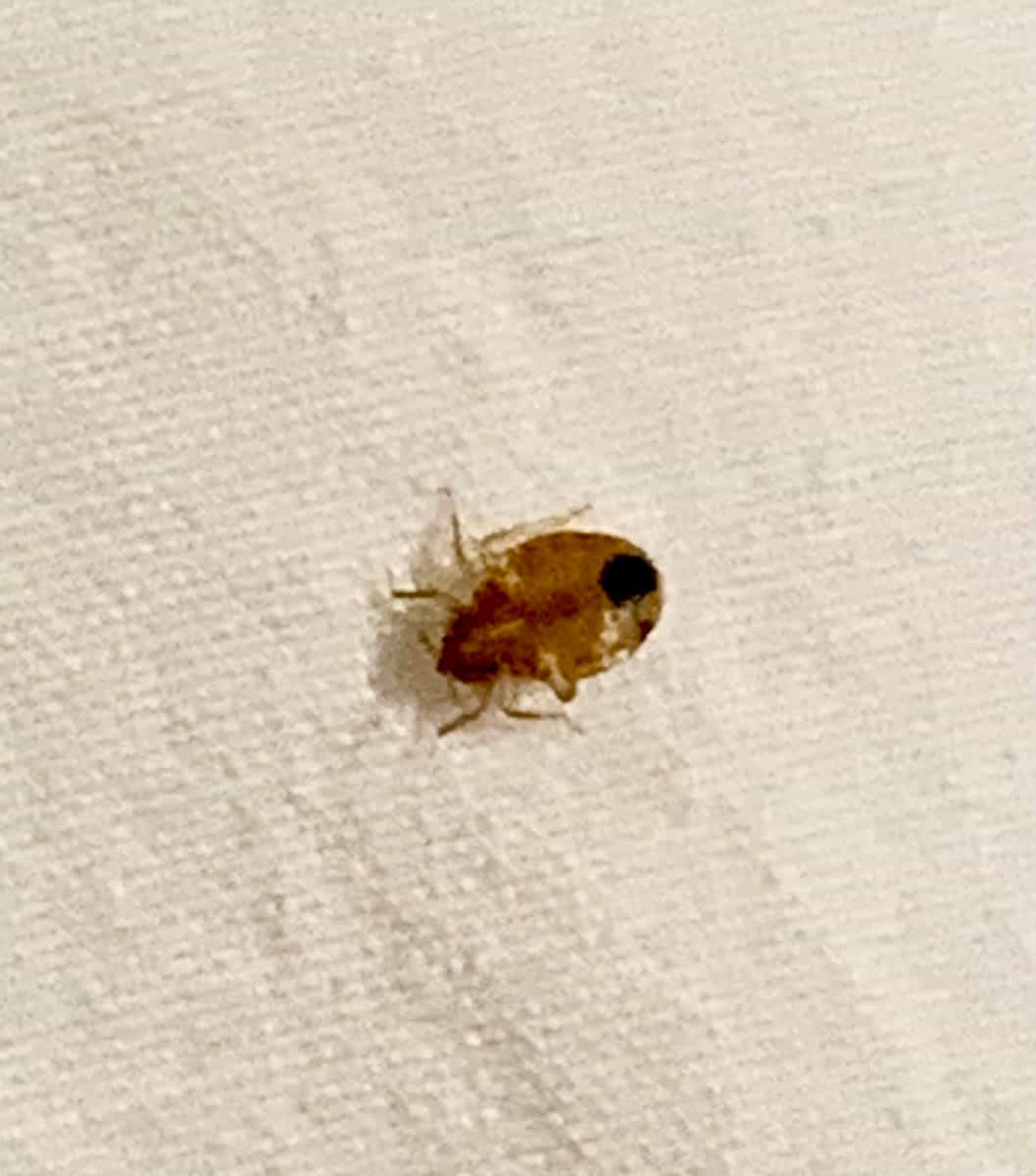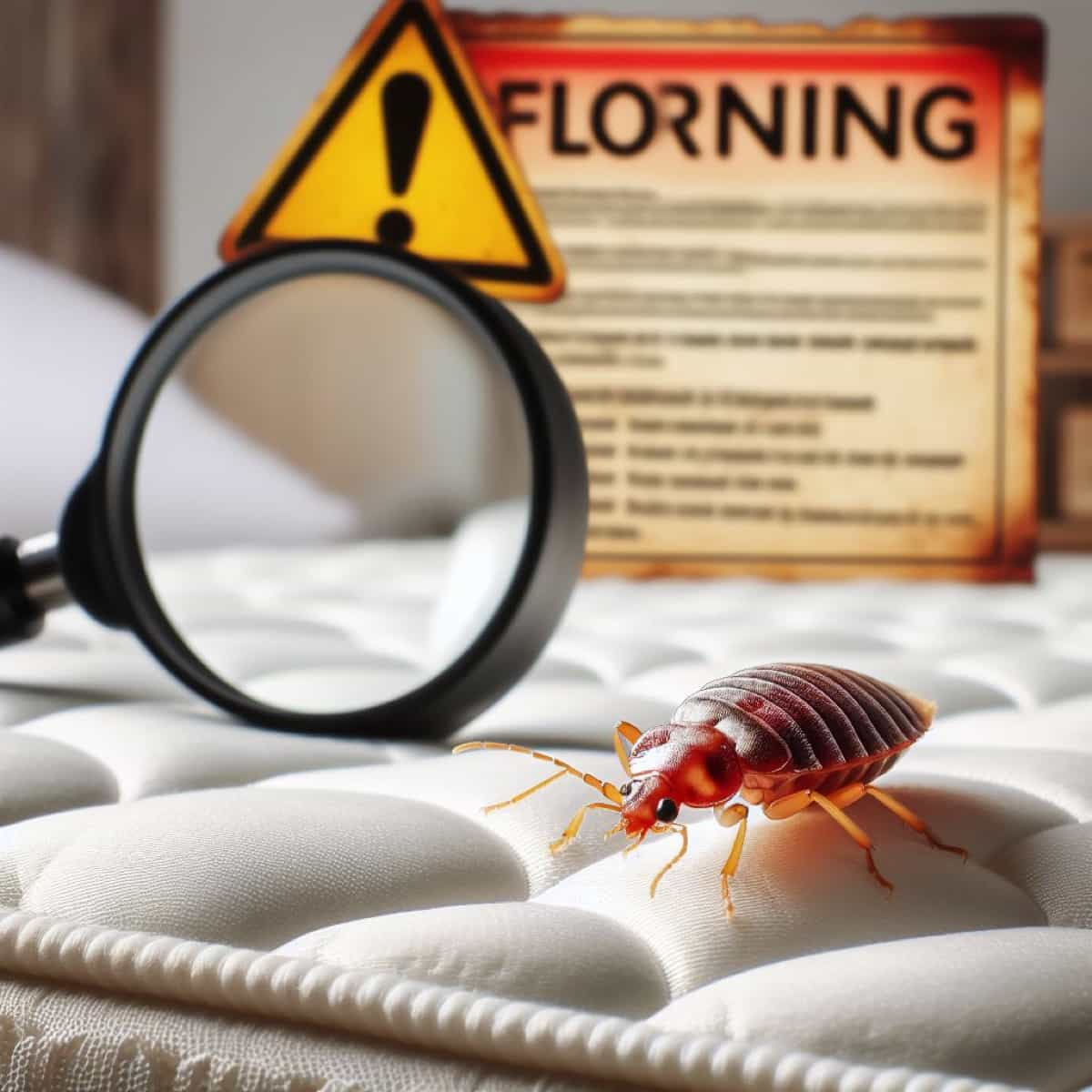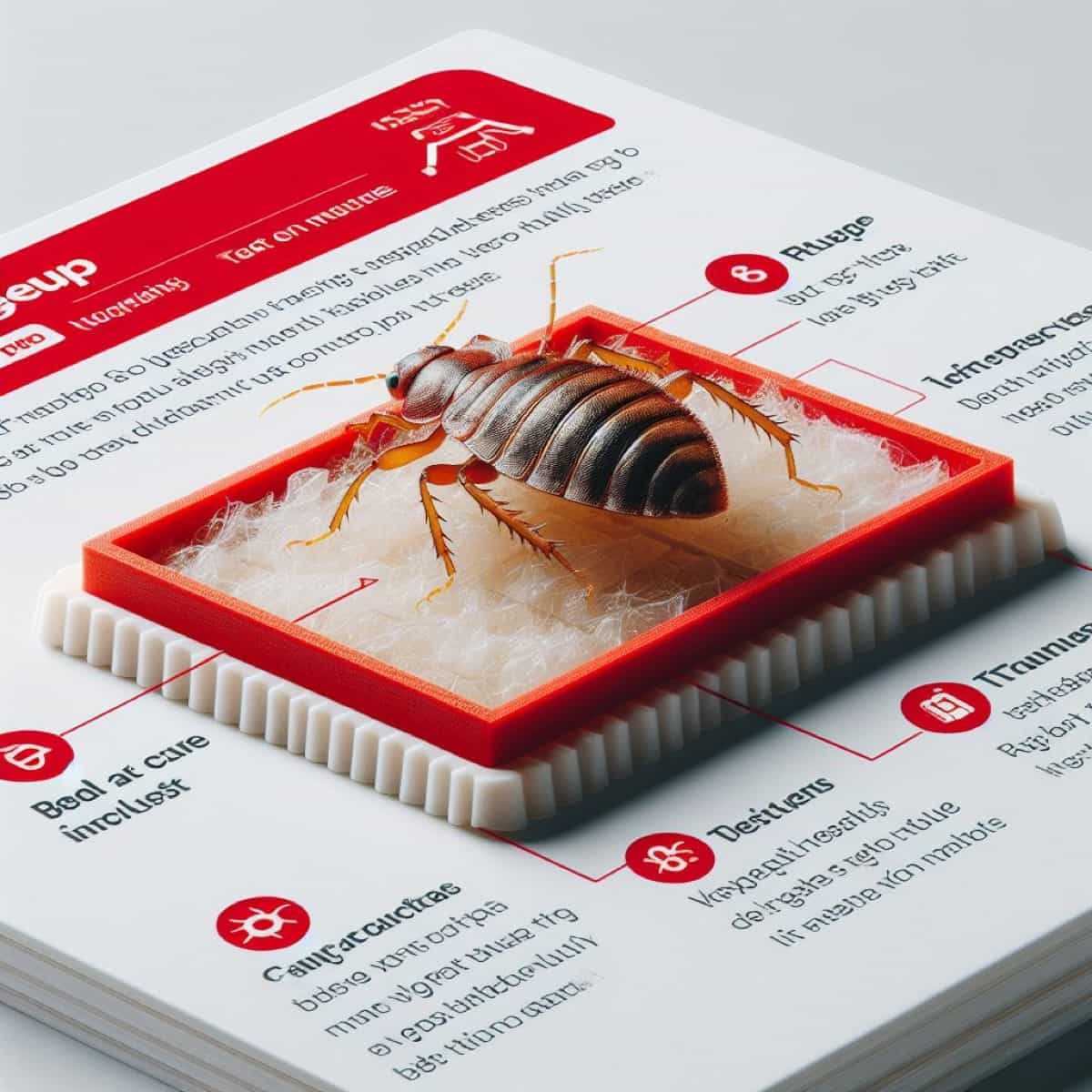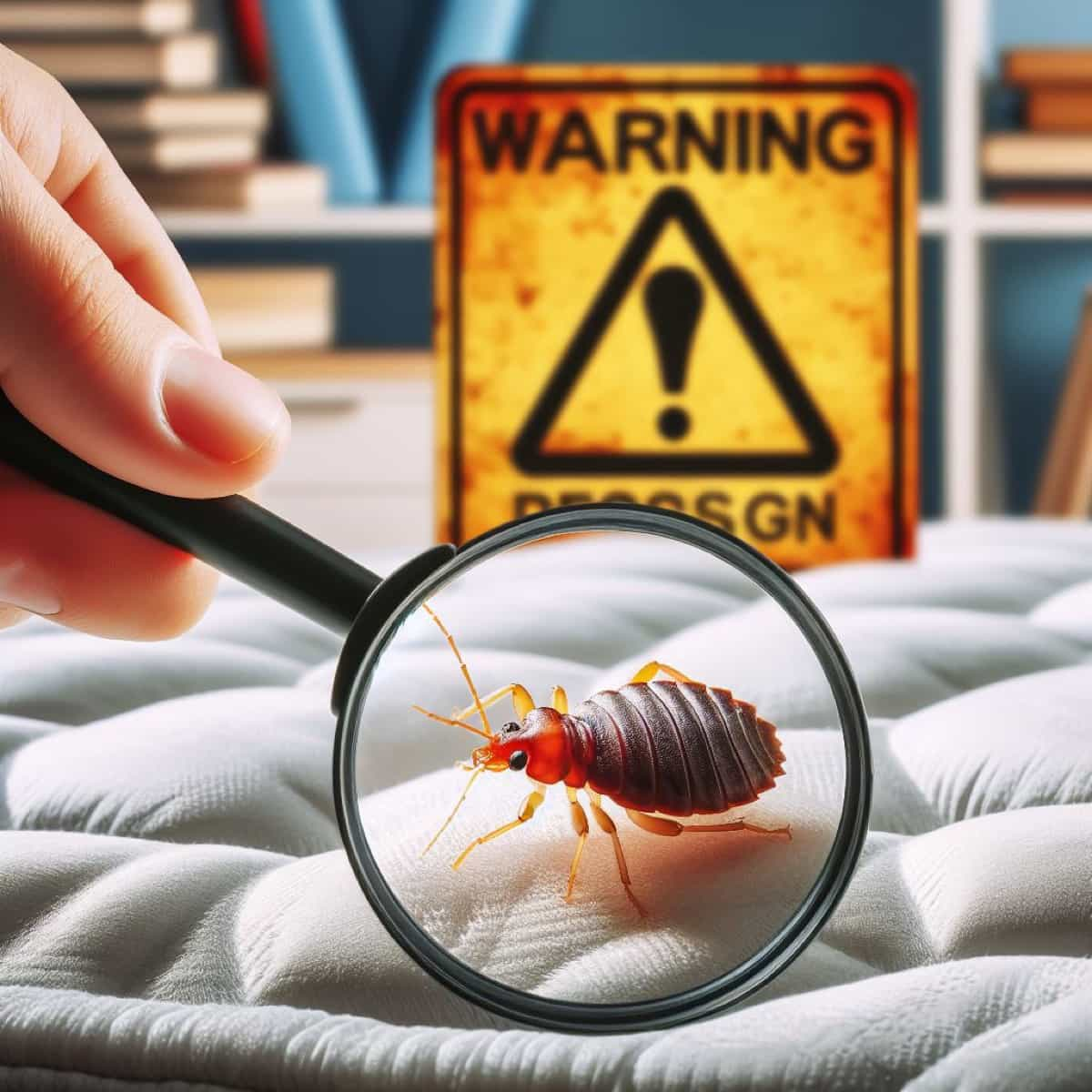Bed bugs (Cimex lectularius), those tiny blood-sucking pests that can invade your home and disrupt your sleep, have an impact on your health. Effective control methods, such as using glue traps, play a vital role in managing bed bug populations. Glue traps are designed specifically to attract and capture these pests without the use of harmful chemicals or pesticides.

How to Use Glue Traps for Bed Bugs
Preparation is Key: Before Setting Up Your Glue Traps
It’s crucial to thoroughly clean and declutter the area where you’ll be placing the traps. Next, consider using a flashlight to carefully inspect your mattress and bed frame for any signs of bed bug activity. When selecting glue traps, opt for ones specifically designed for capturing bed bugs. Once you have chosen the right traps, strategically position them in high-traffic areas such as along baseboards, near the headboard of your bed, and beneath furniture legs.
Choose the Right Glue Traps for Your Bed Bug Infestation
Firstly, you’ll want to ensure that the glue trap is specifically designed for bed bugs. Additionally, look for glue traps that are non-toxic and safe for use in homes. You don’t want to introduce harmful chemicals into your living space while trying to get rid of bed bugs. Opting for eco-friendly options will not only protect your health but also the environment.
Consider the size and design of the glue traps as well. Bed bugs tend to hide in small crevices and tight spaces, so choosing traps with narrow openings or foldable designs can increase their effectiveness. Read reviews and do some research on different brands before making your final decision. Remember, selecting the right glue traps is just one part of an effective bed bug control strategy.
Place Glue Traps in High-Traffic Bed Bug Areas
These tiny pests are notorious for hiding and breeding in hard-to-reach areas such as cracks, crevices, and mattress seams. To effectively trap them, you need to think like a bed bug. Start by identifying the high-traffic areas where bed bugs are likely to travel.
In case you missed it: How to Get Rid of Fungus Gnats: Identify, Life Cycle, and Control

Once you’ve identified these hotspots, carefully place the glue traps in those locations. Regularly check the glue traps for any signs of activity, including live or dead bugs caught in the adhesive or fecal stains left behind by their presence. Monitoring allows you to gauge how effective your control efforts have been and make necessary adjustments if needed.
Set Up Your Glue Traps for Maximum Effectiveness
Make sure you have identified the high-traffic areas where bed bugs are likely to be found. This could include the edges of mattresses, behind headboards, or along baseboards. When setting up your glue traps, ensure that they are placed flush against walls or other surfaces where bed bugs may crawl. This will prevent them from simply bypassing the trap.
To lure bed bugs into the trap, consider adding a small amount of bait, such as carbon dioxide sources like dry ice or heat-emitting devices near the trap. Bed bugs are attracted to these cues and will be more likely to venture onto the sticky surface. Remember that patience is key when using glue traps for bed bug control.
Monitor Your Glue Traps for Bed Bugs: What to Look For
The most obvious thing to look for is the actual presence of bed bugs on the glue trap. These blood-sucking insects are reddish-brown, and about the size of an apple seed, so they should be easy to spot. Take note of how many bed bugs you find on the glue trap. Another important thing to look for is the location of the glue trap. Place them strategically near areas where bed bugs are to travel – such as along baseboards, under furniture, or near your sleeping area. Pay attention to the number of bed bugs trapped on each glue board.
Remove Bed Bugs from Glue Traps: A Step-by-Step Guide
Firstly, put on a pair of gloves to protect yourself from potential allergens or irritants that the bed bugs might carry. Safety should always come first when dealing with pests. Next, carefully lift the glue trap off its surface. Try not to touch the trapped bed bugs directly, as it can be messy and potentially spread germs. Once removed, place the glue trap inside a sealed plastic bag or container. This will prevent any escapees from making their way back into your living space. Seal up the bag tightly and dispose of it in an outdoor garbage bin immediately.
In case you missed it: How to Treat Plant Diseases with Homemade Sprays: DIY for Controlling Plant Diseases

After disposing of the used glue trap, wash your hands with soap and warm water to eliminate any lingering residues or odors. It’s essential to repeat this process regularly until you no longer find any signs of bed bug activity on glue traps. Remember that removing bed bugs from glue traps is just one part of an effective pest control strategy. Make sure to address all areas where they may be hiding and consider seeking professional help if necessary.
Dispose of Used Glue Traps and Bed Bugs: Safety First!
Properly disposing of used glue traps and bed bugs is crucial to ensure the effectiveness of your bed bug control strategy. Not only does it prevent reinfestation, but it also minimizes any potential health risks associated with handling these pests. When removing the glue trap from its placement, always wear protective gloves to avoid direct contact with any trapped bugs. Carefully place the trap in a sealed plastic bag or container, ensuring that there are no openings for escape. Carefully wash your hands with soap and water after handling glue traps and before touching anything else to minimize cross-contamination.
Clean and Maintain Glue Traps for Optimal Performance
To clean your glue traps, start by carefully removing any trapped bed bugs using a pair of tweezers or gloves. Place the captured insects into a sealed bag to prevent them from escaping or spreading further. After cleaning, allow the trap to dry thoroughly before reusing it. Regularly inspect your glue traps for signs of wear and tear. If you notice any damage, such as tears or excessive dirt buildup, replace them with fresh ones to maintain maximum trapping efficiency.
Troubleshoot Common Issues with Glue Traps for Bed Bugs
No Bed Bugs Caught – If your glue traps are empty and not catching any bed bugs, it could mean that they are not in the areas where the traps are placed. Try moving them to different locations within the room, especially near potential hiding spots such as cracks or crevices in furniture or walls.
Trap Adhesive Not Sticky Enough – Sometimes, the adhesive on glue traps may lose its stickiness over time or due to dust accumulation. Ensure that you’re using high-quality glue traps specifically designed for bed bug control. If needed, replace old traps with new ones to ensure maximum effectiveness.
Traps Getting Knocked Over – If your glue traps keep getting knocked over by pets, children, or other factors, try securing them in place with tape or placing them inside small containers like plastic lids. This will help prevent accidental disturbance and maximize their efficiency.
Integrate Glue Traps into Your Overall Bed Bug Control Strategy
Combining the use of glue traps with other methods will ensure maximum effectiveness in eradicating these pesky pests from your home. The main step is to continue monitoring and inspecting your living space regularly. Pest control experts have extensive knowledge and experience in dealing with bed bug problems efficiently. Take proactive measures by practicing good hygiene habits such as regular cleaning, decluttering your living spaces, and being cautious about bringing second-hand furniture or items into your home without a thorough inspection.
In case you missed it: 10 Easy DIY Mosquito Traps: Best Homemade Mosquito Traps

Frequently Asked Questions (FAQ) on Using Glue Traps for Bed Bugs
Are Glue Traps Effective in Getting Rid of Bed Bugs?
Yes, glue traps can be an effective tool in monitoring and capturing bed bugs. However, they are not a standalone solution for eliminating a bed bug infestation.
Where Should I Place the Glue Traps?
It’s best to place them near areas where bed bugs are likely to hide or travel, such as along baseboards, under furniture, and near the headboard of your bed.
How Long Should I Keep Using Glue Traps After Getting Rid of Bed Bugs?
Even after successfully eliminating a bed bug infestation, it is advisable to continue monitoring with glue traps for several weeks or even months afterward. This helps ensure that any remaining stragglers or new arrivals are captured before they have a chance to reproduce and start another infestation cycle.
Conclusion
The effect of bed bugs can have a major impact on our daily lives. These small insects mostly feed on human blood and can cause itchy bites, skin irritation, and even allergic reactions in some people. These tiny, blood-sucking pests are not only a nuisance but can also have serious implications for your health and well-being. That’s why it is crucial to take immediate action and control bed bug infestations effectively.
- Beneficial Insects in Pest Management
- Natural Solutions for Pest Control in Flower Gardens
- Types of Fungicides Used in Agriculture
- Common Issues in the Fruit Development Stage of Pomegranate Farming
- Fruit Development Issues in Papaya: Easy Solutions and Treatment
- Soil-Borne Diseases and How to Protect Your Plants
- Practices to Prevent Disease Spread in the Garden
- From Wilted to Thriving: How to Treat Root Rot Naturally in Houseplants
- Natural Remedies to Cure Brown Spots on Fig Tree Leaves